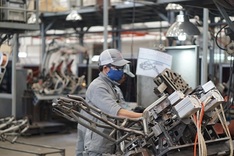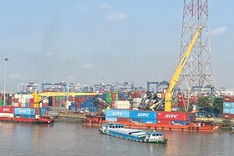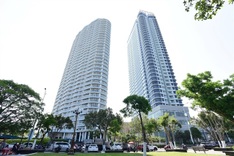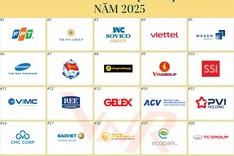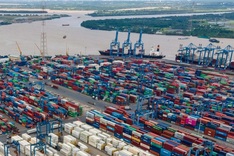As market interest rate liberalisation chatter continues, base rate changes again shape up as a key factor driving the local banking market. The State Bank last Thursday, March 25, decided to maintain the base rate at 8 per cent for the fifth month in a row.
 |
| The juggling act continues to lessen inflationary pressures |
Few days before, HSBC stated that it predicted the State Bank was going to increase its policy rate again by 1 per cent “in the coming weeks” with inflationary pressures still lurking.
“In the fight against inflation, raising interest rates remains the most market-familiar way of doing things,” said HSBC’s Asia economist Wellian Wiranto saidWiranto.
In March, 2010, Vietnam’s consumer price index (CPI ) rose by 0.75 per cent against February, lifting its CPI year-on-year rate to 9.5 per cent, the highest in the last 12 months.
“Though shy of the 10 per cent level that we expected, the latest number is still worryingly high. The underlying inflationary pressures in the country remain strong and thus we expect a policy rate rise,” Wiranto added.
In fact, the long debate over liberalising market interest rates has been undergoing. Local banks expect a free-setting interest rate mechanism as a market-oriented move to benefit not only the banking system, but also local businesses.
Tran Hoang Ngan, member of the National Advisory Council for Monetary Policy, argued that by allowing local banks to freely set mobilisation interest rates, the market would fall into chaos.
“The race to hike mobilisation interest rates would see the local banking market hit turbulence,” said Ngan.
At the moment, local banks are allowed to set mobilisation rates within 1.5 times of the base rate. Since March 1, the State Bank has lifted the cap on lending rates that banks were obliged to follow, previously 12 per cent per year or 1.5 times of the base rate for medium and long-term loans.
Now, Vietnamese banks can charge higher lending rates to better reflect borrowers’ risk and loan needs. “In some ways, hiking the base rate now would be merely formalising the pseudo-tightening that has taken place anyway - with crucial benefit of signaling the authorities’ seriousness in fighting inflation to the consumers and the market,” said Wiranto.
Wiranto added that widening trade deficit was another push for monetary tightening. Ministry of Planning and Investment’s report said that Vietnam’s aggregate trade deficit in 2010’s first quarter could reach $3.6 billion.
“These early indications point toward the fact that trade deficit is unlikely to go away any time soon, with resulting pressures on the currency depreciation. More reasons, as well, for the State Bank to tighten monetary again soon,” said Wiranto.






